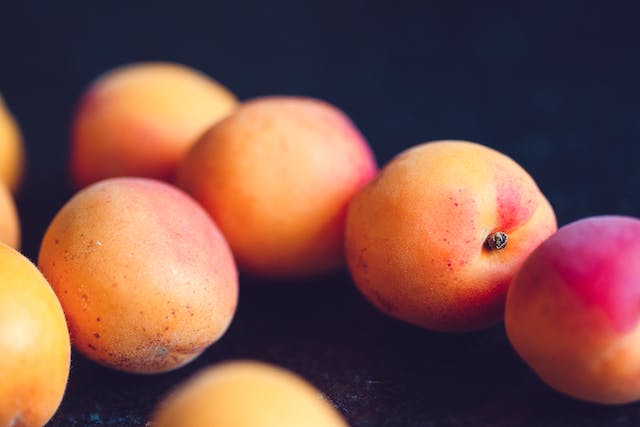This is the ultimate guide on How To Tell if Peach is Bad!
Hey there, peach lover! There’s nothing quite like sinking your teeth into a juicy, ripe peach on a hot summer day. But what happens when your beloved peach starts to turn? Fear not! We’re here to help you navigate the fine line between ripe and rotten. Let’s dive into the juicy details of identifying those not-so-peachy peaches.
How To Tell if Peach is Bad
Signs of a Bad Peach:
- Bruising: Alright, let’s talk bruises. Peaches, with their delicate skin, can bruise easier than a ripe avocado. A little bruise here and there? No biggie! Just slice around it. But if your peach looks like it’s been in a boxing match, it might be time to bid it farewell.
- Soft Spots: Ever felt a peach and thought, “Hmm, that’s softer than a pillow”? Soft spots are like red flags waving in the breeze, signaling potential trouble. It’s not the end of the road, though! Use those peaches up fast or pop ’em in the fridge to slow down the spoiling spree.
- Brown Spots: Brown spots on a peach can be a bit like finding a mystery stain on your favorite shirt. It might not be a big deal, but it’s definitely cause for investigation. Put those spotted peaches in the fridge and get creative with how you use them before they go south.
- Wrinkly Skin: Wrinkles might add character to a wise old peach, but they’re not exactly a sign of peak freshness. If your peach is looking more like a raisin, it’s time to act fast. Check for mold and give it a taste test before deciding its fate.
- Mold Growth: Ah, mold. The unwelcome guest at any fruit party. If you spot mold on your peach, it’s time to kick it out the door. Don’t hesitate—toss that moldy peach into the compost and move on to greener (or peachier) pastures.
- Internal Issues: Sometimes the real drama happens on the inside. If you slice open your peach and find anything suspicious—like browning or mold—don’t take any chances. It’s better to be safe than sorry when it comes to peachy peril.
Additional Considerations:
- Canned Peaches: Got a can of peaches lurking in your pantry? Give ’em a sniff before diving in. If they smell funky or look off, it’s best to play it safe and toss them out. Once opened, keep those canned peaches chilled and enjoy them within a week.
- Overripe Peaches: Overripe peaches might be past their prime for snacking, but they’re still perfect for whipping up some tasty treats. Think peach cobbler, jam, or even a fruity salsa. Just remember to keep ’em cool to slow down the mushy march of time.
Conclusion – How To Tell if Peach is Bad
Peaches are a summertime staple, but knowing when they’re past their prime can save you from a mouthful of disappointment. Keep an eye out for those telltale signs of spoilage, and you’ll always be ready to enjoy the sweet taste of summer.
| Signs of a Bad Peach | Action |
|---|---|
| Bruising | Slice around minor bruises; discard heavily bruised peaches |
| Soft Spots | Use promptly or refrigerate; cut out bad spots before use |
| Brown Spots | Refrigerate and use quickly; discard if flavor is affected |
| Wrinkly Skin | Check for mold; taste test before use |
| Mold Growth | Discard immediately |
| Internal Issues | Discard if mold or browning is present near the pit |
| Canned Peaches | Discard if they smell off; refrigerate and use within a week after opening |
| Overripe Peaches | Use in recipes promptly; refrigerate to prolong freshness |
There you have it! With these tips and tricks, you’ll never be caught off guard by a bad peach again. Happy peach-picking! 🍑

